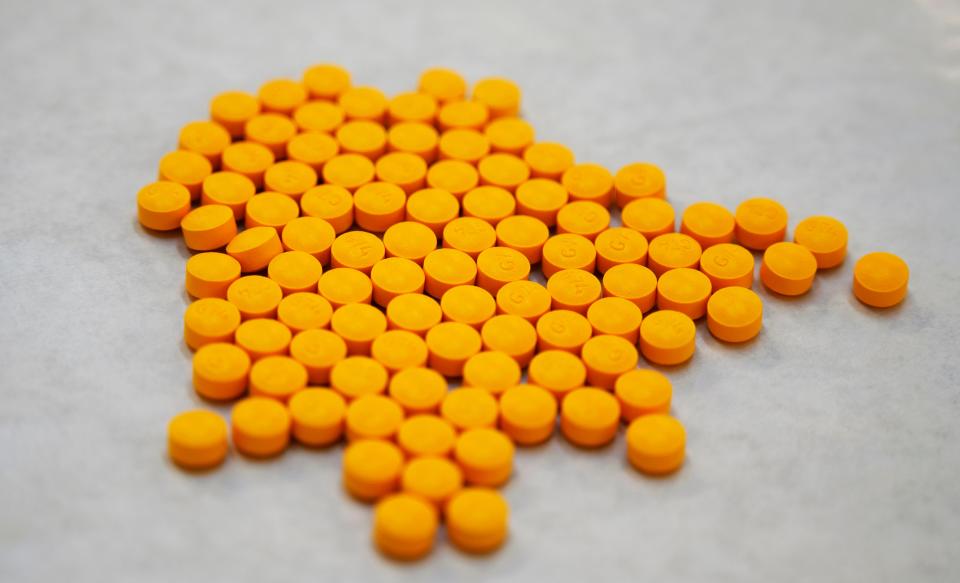COVID has been hiding another epidemic. We have to do more for our opioid patients.
A 40-year-old man arrives in my hospital’s emergency department, blue from not breathing. It takes several rounds of medication and ventilators to save his life. That same day on the medical wards, an overhead speaker pages a “rapid response” announcement to my elderly patient’s room; she cannot wake up. And down the hallway, a middle-age finance manager is causing a scene because he isn’t prescribed the IV medication he wants.
All of these scenes happen on a daily basis, not just in my hospital but in those around the country. And all three of these patients’ ailments have the same cause: opioids.
Over the past three years, I’ve been taking care of patients stricken with COVID-19, young and elderly alike gasping for air. But the ebbs and flows of one pandemic have hidden the growing presence of another widespread disease: opioid dependence and abuse.

Government intervention is only a start
There are more and more news reports of how the opioid crisis has ravaged the country, and it is only accelerating. Last year alone, nearly 110,000 people died from opiate use, many from the synthetic drug fentanyl.
The Centers for Disease Control and Prevention (CDC) estimates that close to a million people have died from opiate overdoses since 1999. That is so many deaths, it has contributed to a decline of the national life expectancy age.
US opioid epidemic is killing our kids: Drugs and untreated mental health issues are killing America's kids. You can help stop it.
Opioids, also known as narcotics, kill mainly by leading to respiratory depression. An overdose can cause the breathing centers in the brain to slow and shut down, depriving people of oxygen and then their life. Other side effects can also lead to life-threatening illness, including significant confusion, severe constipation, low blood pressure and inability to be woken up.
In the past few years, the government has stepped up to combat the opioid crisis. Last fall, the Biden administration announced $1.5 billion in grants for this purpose, expansion of substance use treatment centers and increasing access to the overdose reversal agent naloxone. This is a fantastic start, but more will be needed.
One thing we can do is destigmatize our perception of those affected by addiction and overdose.
Addiction isn't a moral failing
The stereotypical view of those affected by the crisis is one of a homeless addict strung out on heroin, but this is not always the case.
I have seen opiates affect every walk of life, from the unfortunate and unhoused to wealthy executives. Many of the patients I have treated are high-functioning, employed people who at first suffered from chronic back pain and received a prescription for narcotic pain relievers.
Physiologically and psychologically addictive, they never weaned off. As their body got used to the medications, they were soon needing more and more, and many turned to illicit drugs or street-sold oxycodone, often unknowingly laced with fentanyl. People can become addicted to pain pills for many reasons, but many started with an innocent prescription.
I lost my son to fentanyl. Now my family is on the front lines of the opioid epidemic.
It is important to realize that those addicted or who suffer an overdose are not bad people, but that they did get into a bad situation. With this in mind, perhaps we and the politicians we elect can push for more extensive and compassionate reforms to combat the opioid crisis.
We can do more to expand not just access to naloxone to reverse overdoses, but also medications for opioid addiction itself, which can be out of reach for the disproportionately affected minority and underprivileged populations. We can start talking about harm reduction methods such as distributing fentanyl test strips to test for lacing of this dangerous substance in drugs bought off the street.
Opinion alerts: Get columns from your favorite columnists + expert analysis on top issues, delivered straight to your device through the USA TODAY app. Don't have the app? Download it for free from your app store.
Perhaps we can even talk about clean needle or medically supervised substance settings without blaming the victims. This can all be done in parallel as we find ways to stem the influx of fentanyl and illicit narcotics into the country.

These conversations will never not be fraught with politics, but perhaps we can fill them with more compassion for our fellow man. As these debates continue, doctors like me will continue to treat innumerable patients in the hospital with opioid-use disorders, and more than 2,000 Americans will die per week from overdose. That is a pill that this country cannot afford to continue swallowing.
Dr. Thomas K. Lew is an assistant clinical professor of Medicine at the Stanford University School of Medicine and an attending physician of Hospital Medicine at Stanford Health Care Tri-Valley. All expressed opinions are his own. Follow him on Twitter: @ThomasLewMD
You can read diverse opinions from our Board of Contributors and other writers on the Opinion front page, on Twitter @usatodayopinion and in our daily Opinion newsletter. To respond to a column, submit a comment to letters@usatoday.com.
This article originally appeared on USA TODAY: Fentanyl crisis isn't slowing. We must ramp up opioid addiction fight

